
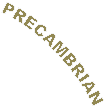


|
Our home The sheltering abode of life & mind Help us evolve out of the darkness of ignorance and superstition upon which bigotry and hypocrisy thrives. Question not whether you believe like me, or me like you, but whether together we can ethically and morally strive to make the world a better place. A world not marred by you and me. A world where our mortality is perpetuated by an evolving continuum of an intelligent life form which will look back upon our time, And be proud and joyful of our existence on Earth. ********* 1935 Ray Allen Woods 20?? Creator of Tetranometry, Freeology and a Map of the Human Mind |



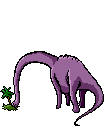
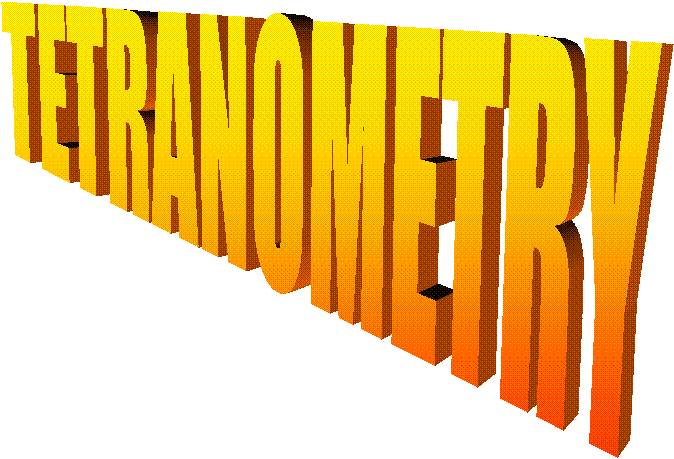










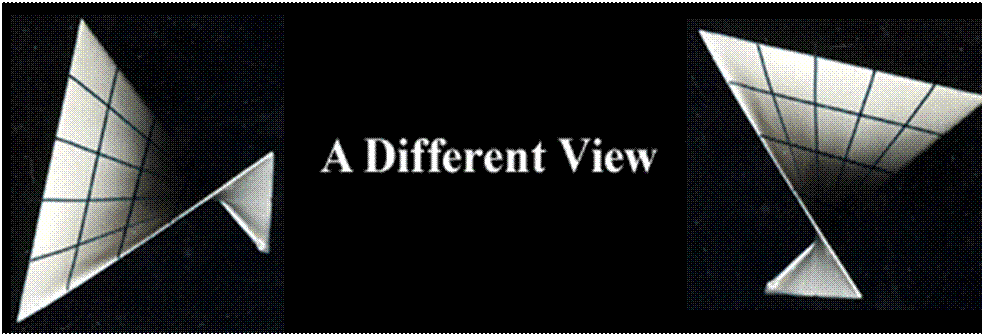
|
Around 300 B.C. the Greek mathematician Euclid is said to have taught and founded a school at Alexandria. His book the 'Elements' along with later books written by Archimedes defined and laid the foundation of modern geometry. Both the hyperbolic and the parabolic shapes were defined but apparently the combined shape of the hyperbolic paraboloid was not addressed in a manner that recognized that the surface of a warped plane generated from straight line elements can define the vertices or points of a tetrahedron. Or two pairs of opposite edges of any shaped tetrahedron, regular or otherwise can be used to generate a hyperbolic paraboloid. Photo #1 is models of hyperbolic paraboloids. Their shape is made up of straight line elements. These particular hyperbolic paraboloids have vertices which are located equal distance apart and their edges are equal in length. The mind of the human individual is shaped by each individual's experiences. We call the summation of these experiences reality. Jonathan Swift and Lewis Carroll in their classics "Gulliver's Travels" and "Alice in Wonderland" describe realities which are different than the reality of a contemporary individual schooled in the tradition of western reasoning. By thinking back into history, back before Isaac Newton, Euclid, Plato, Socrates, and Pythagoras, back in time before man had made his first six-sided stone monolith or brick out of mud we can imagine what might have taken place. By taking a handful of mud, shaping it into a ball and flattening the ball in a special way one could make the ball of mud six-sided, put it into the sun to dry and call this cubic object a brick. With this object one could build an arch and later a dome. Since that time our ancestors have made many arches and domes, and this six-sided 'View' has produced the reality that we live in today: Ours is a reality of up or down, top or bottom, front or back, left or right, right or wrong, black or white, a neat little reality all held together by the force of gravity. Today, as we go into space, we enter a realm where our arches and domes fly apart. We do not have gravity as a bonding agent in space as we do on earth. What would our reality be and what would the tools of reasoning be like if our ancestors had decided to make their mud balls, or carved their stones not into a six-sided object but into a simpler four-sided object? It appears that when nature started evolving life forms, she picked the simpler four- sided configuration built around the carbon molecule. It is possible that if our ancestors had chosen the four-sided tetrahedron instead of the six-sided cube, our view of modern reality might have evolved with a 'Different View.' Even our tools of reasoning would have been different. Would we still have a base 10 number system where we square or cube a number instead of triangle or tetrahedron it? Would we be as comfortable with 90 degree or right angle construction which is so rarely used in nature, or even more rarely used within the organic realm? R. Buckminster Fuller takes a 'Different View' in his books, "Synergetics I and II". He explores reality in a four-sided way, but even Fuller uses western logic based around a system of mass where the basic building blocks of reality are constructed of spherical atoms. Once more think back into time, and instead of making bricks, let's look at another ancient skill, the skill of weaving and basket making. Actually, as we venture out into space, this ancient art form has applications more appropriate than brick making. In fact modern man has been so, busy making bricks, arches, domes, and tin-can space stations that we have neglected weaving and its tensile design potential. Weave a flat matt out of sticks, straight sticks, and interlace them together so we have four edges and four vertices. The angles that the edges form at the vertices will add up to 360 degrees if all of the edges lie in the same plane. Let us take a 'Different View' and weave our straight sticks together in a manner where the edges are in different planes. Now measure the angles that the sides form and they add up to less than 360 degrees. We have formed a hyperbolic paraboloid. Let us call it an HP for short. Look at the surface of the HP and you can see that it curves two ways at the same time and it is still made up of straight line elements. Now let us get fancy with our weaving and invent a way to weave three HPs together in a manner where each HP shares two sides in common; this will form an object which has six edges and four vertices like a tetrahedron. Since this object does not have flat faces we will name this invention a TETRALITH. |
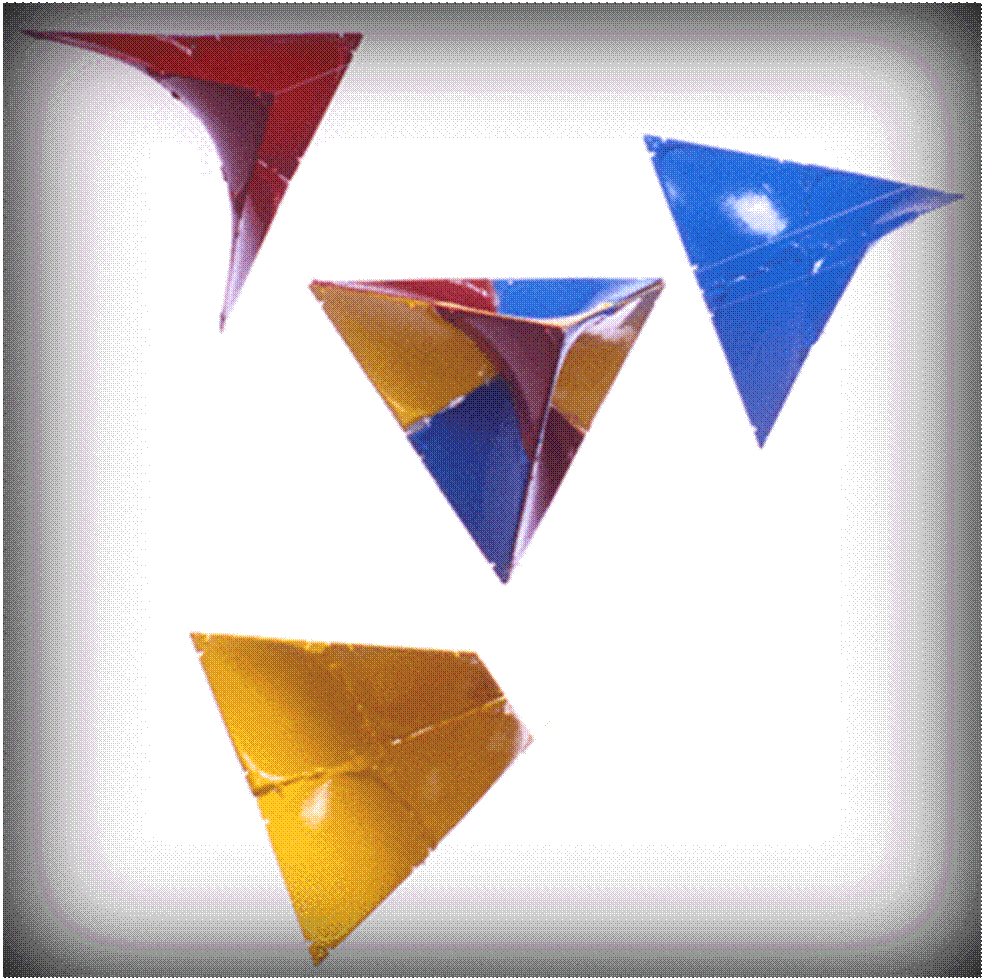
|
Merge three hyperbolic paraboloids in a manner where they have a common midpoint and together they make up a three dimensional solid which is given the name, TETRALITH. The tetralith has four vertices and six edges like a tetrahedron. It is a three dimensional object made up of straight line segments like the tetrahedron, but its faces are made up of three small hyperbolic paraboloid planes which converge at a common midpoint. Photo #2 pictures three separate hyperbolic paraboloids before they are merged and a tetralith which has been assembled by merging three hyperbolic paraboloids. |

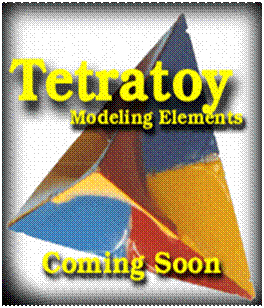

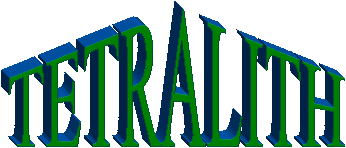

|
While we are inventing and labeling, let us invent one more thing. Let us weave six HPs together where they all have a common mid-point. Now we have invented an object which we will call an OCTALITH. The OCTALITH is made up of eight PHILS or twenty-four RAYPLANES. Actually, we are right back to where we started, because the OCTALITH which we have invented has eight vertices just like the six-sided brick. Or if we take a 'Different View', it may be possible to describe reality, not only Newtonianly and with Einstein's E=MC˛ but also with a system of reasoning based around synergetic force-fields. It could be that, instead of thinking atoms, bricks and entropy, we can intellectually weave a synergetic tensile reality which will help us become more oriented as we step out of Mother Earth's mud and into the realm of space. |
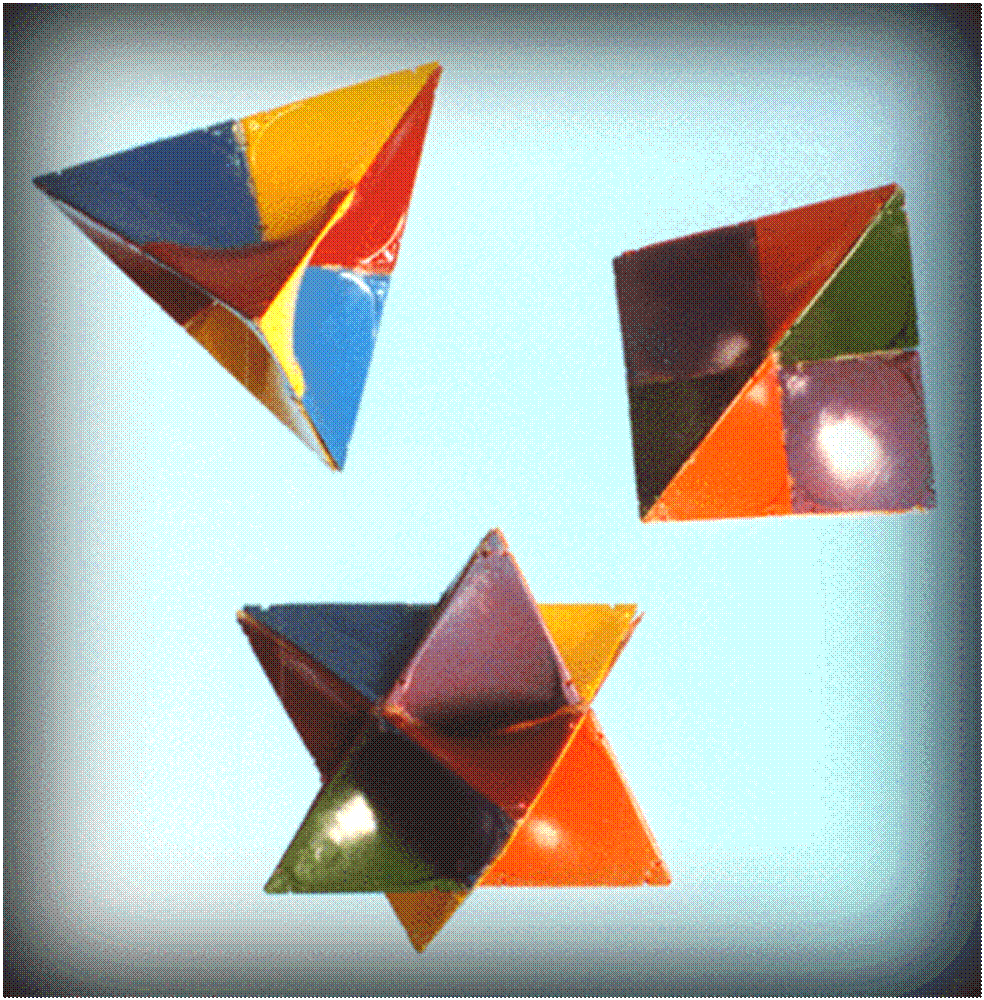

|
Photo shows two tetraliths before they are merged and an octalith which has been merged from two tetraliths. Count the vertices and you can see that the octalith has eight vertices and twelve edges like a cube but unlike a cube the octalith has six intersecting pairs of edges |
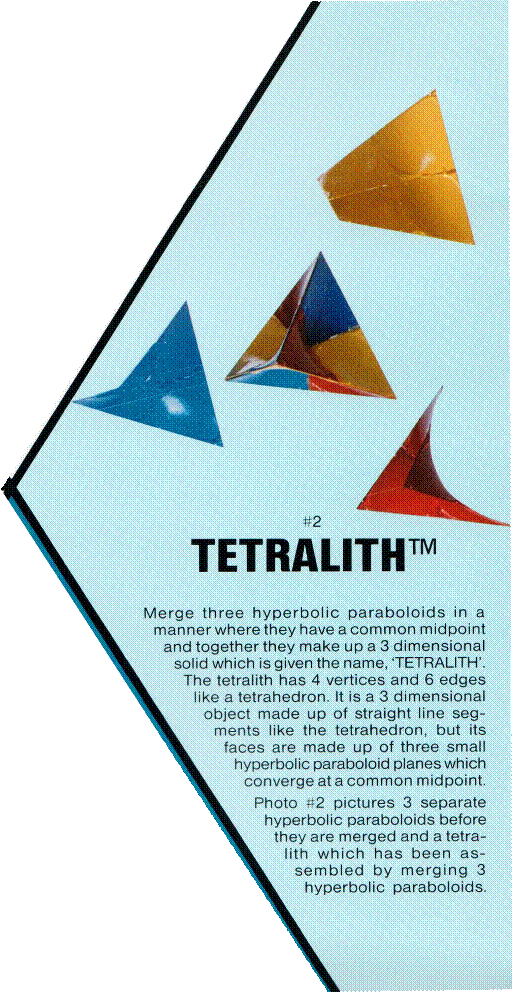


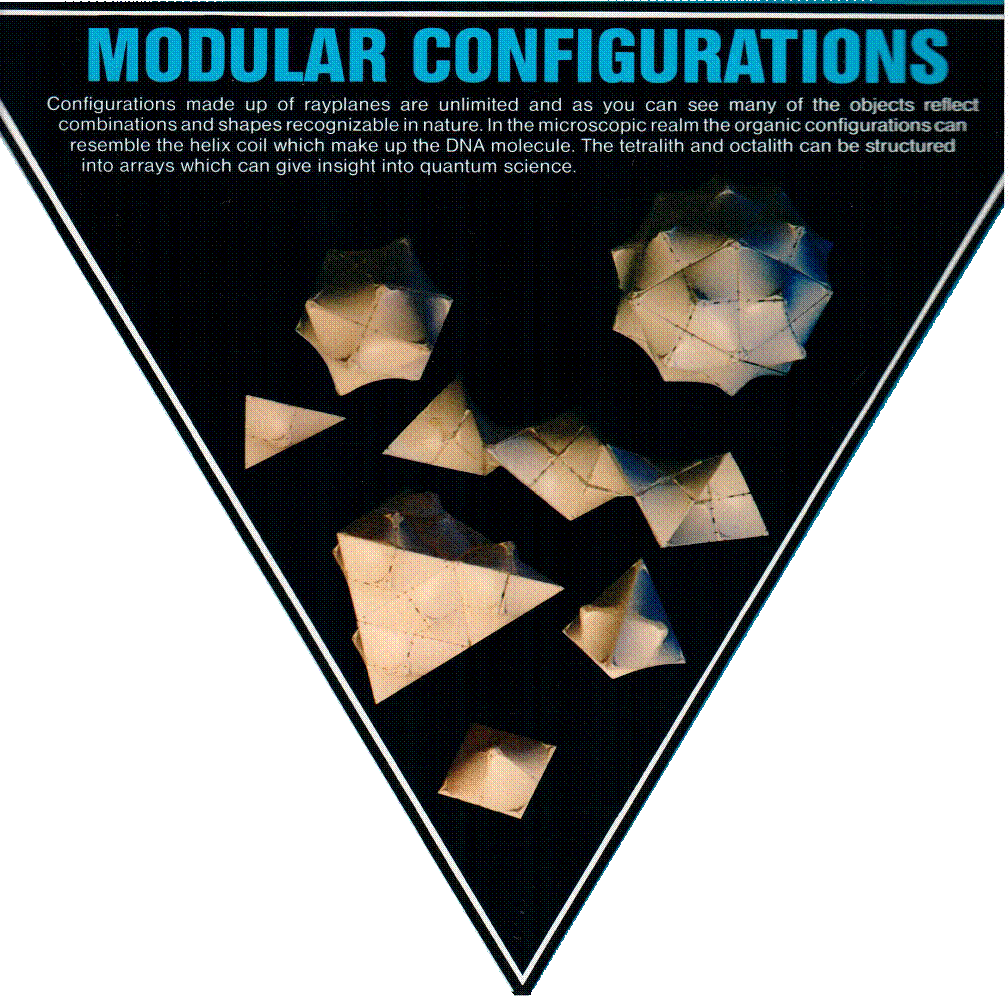
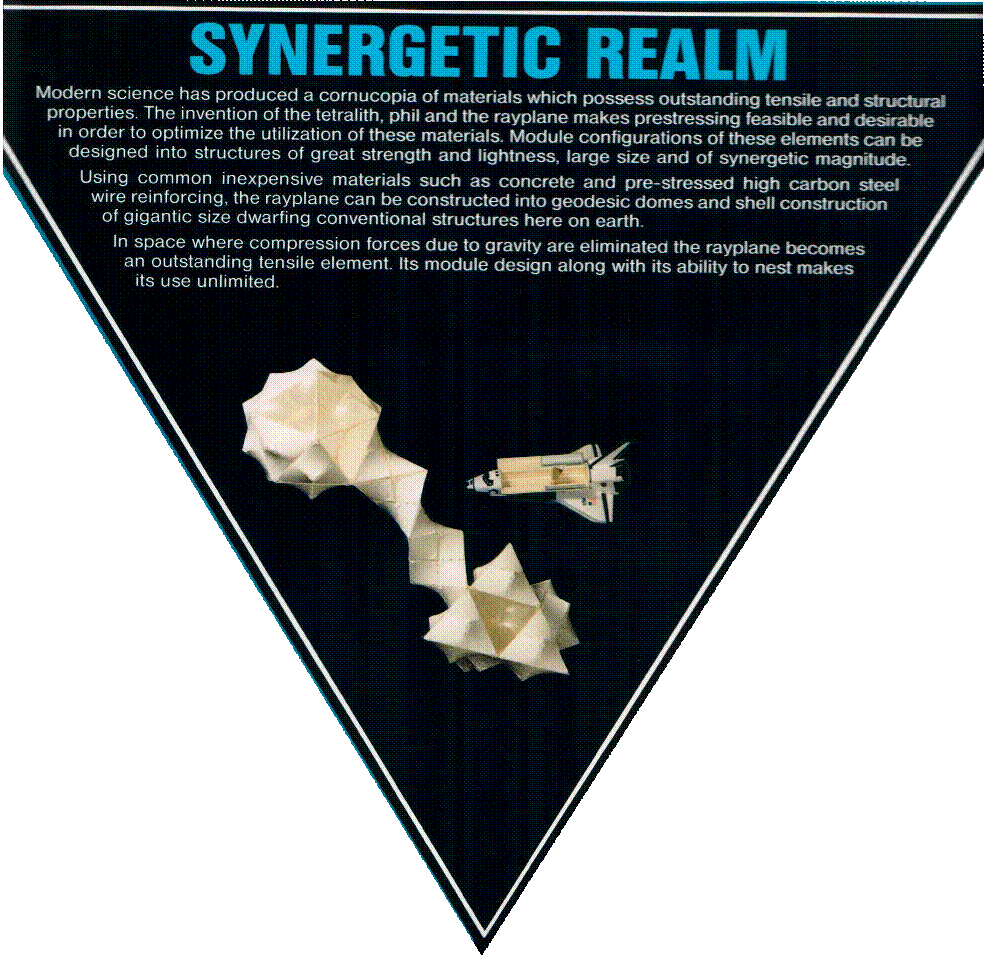
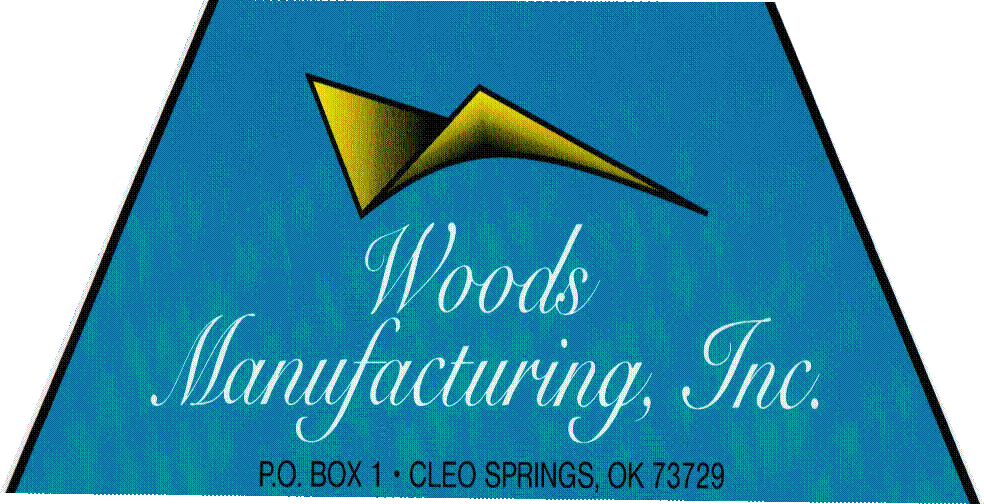
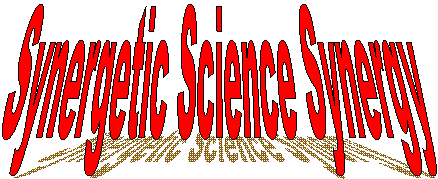





|
United States Patent 5,020,287 The OCTALITH TM is the invention of Ray A Woods The RAYPLANE TM , PHIL TM And TETRALITH TM are derivatives of the OCTALITH. Copyright 1989 Updated
|




